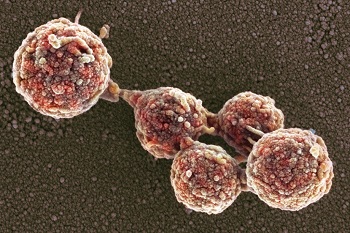In a milestone for synthetic biology, colonies of E. coli thrive with DNA constructed from scratch by humans, not nature.
Scientists have created a living organism whose DNA is entirely human-made perhaps a new form of life, experts said, and a milestone in the field of synthetic biology.
Researchers reported that they had rewritten the DNA of the bacteria Escherichia coli, fashioning a synthetic genome four times larger and far more complex than any previously created.
The bacteria are alive, though unusually shaped and reproducing slowly. But their cells operate according to a new set of biological rules, producing familiar proteins with a reconstructed genetic code.
The achievement one day may lead to organisms that produce novel medicines or other valuable molecules, as living factories. These synthetic bacteria also may offer clues as to how the genetic code arose in the early history of life.
Each gene in a living genome is detailed in an alphabet of four bases, molecules called adenine, thymine, guanine and cytosine (often described only by their first letters: A, T, G, C). A gene may be made of thousands of bases.
Genes direct cells to choose among 20 amino acids, the building blocks of proteins, the workhorses of every cell. Proteins carry out a vast number of jobs in the body, from ferrying oxygen in the blood to generating force in our muscles.
Nine years ago, researchers built a synthetic genome that was one million base pairs long. The new E. coli genome is four million base pairs long and had to be constructed with entirely new methods.
The production of each amino acid in the cell is directed by three bases arranged in the DNA strand. Each of these trios is known as a codon. The codon TCT, for example, ensures that an amino acid called serine is attached to the end of a new protein.
Since there are only 20 amino acids, you’d think the genome only needs 20 codons to make them. But the genetic code is full of redundancies, for reasons that no one understands.
Amino acids are encoded by 61 codons, not 20. Production of serine, for example, is governed by six different codons. (Another three codons are called stop codons; they tell DNA where to stop construction of an amino acid.)
“Because life universally uses 64 codons, we really didn’t have an answer,” Doctors said. So he set out to create an organism that could shed some light on the question.
Now the researchers had a blueprint for a new genome four million base pairs long. They could synthesize the DNA in a lab, but introducing it into the bacteria essentially substituting synthetic genes for those made by evolution was a daunting challenge.
The genome was too long and too complicated to force into a cell in one attempt. Instead, the researchers built small segments and swapped them piece by piece into E. coli genomes. By the time they were done, no natural segments remained.
Much to their relief, the altered E. coli did not die. The bacteria grow more slowly than regular E. coli and develop longer, rod-shaped cells. But they are very much alive.
Doctors hope to build on this experiment by removing more codons and compressing the genetic code even further. He wants to see just how streamlined the genetic code can be while still supporting life.
Many companies today use genetically engineered microbes to make medicines like insulin or useful chemicals like detergent enzymes. If a viral outbreak hits the fermentation tanks, the results can be catastrophic. A microbe with synthetic DNA might be made immune to such attacks.
Lara Khouli

